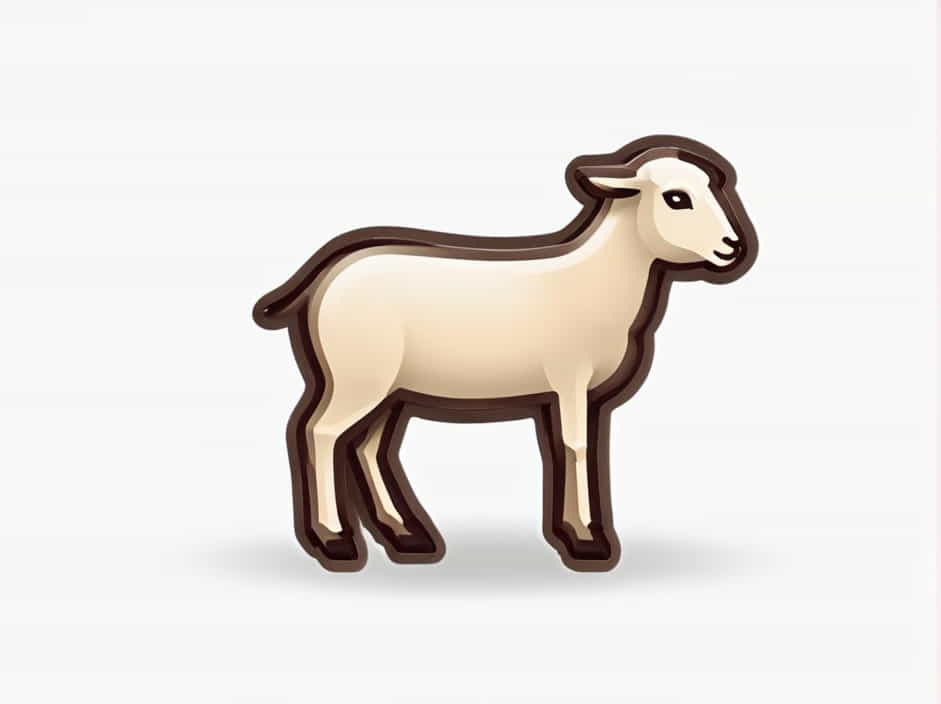The phrase ‘the Lamb was slain before the foundation of the world’ is a profound biblical truth that reveals God’s eternal plan of salvation. Found in Revelation 13:8, it declares that Jesus Christ, the Lamb of God, was chosen as the ultimate sacrifice before creation itself.
But what does this statement truly mean? How can Christ be slain before the world even existed? This topic explores the significance, biblical foundation, and impact of this divine truth.
Understanding “The Lamb Was Slain Before the Foundation of the World”
1. The Meaning of the Phrase
The phrase emphasizes that Jesus’ sacrifice was not an afterthought or a reaction to human sin. Instead, it was part of God’s eternal plan:
- ‘Before the foundation of the world’ means before creation itself (Ephesians 1:4).
- ‘The Lamb was slain’ refers to Jesus’ sacrifice on the cross (John 1:29).
- God foreknew the fall of humanity and preordained salvation through Christ (1 Peter 1:19-20).
This means that Jesus’ death on the cross was not just a historical event but a predestined act of divine love and redemption.
2. God’s Plan of Redemption Was Established Before Creation
Before Adam and Eve sinned, before humanity was even formed, God had already prepared a way for salvation.
- God’s foreknowledge allowed Him to see that mankind would need a Savior (Romans 3:23).
- His love and mercy led Him to provide Jesus as the atonement for sin (John 3:16).
- Christ’s sacrifice was always part of the divine plan (Acts 2:23).
This shows that God’s grace is eternal and that salvation was always meant to be a free gift to those who believe.
Jesus as the Lamb of God
1. The Symbolism of the Lamb in Scripture
Throughout the Bible, the lamb represents purity, sacrifice, and redemption. Jesus is referred to as the Lamb of God because:
- He was innocent and sinless (1 Peter 2:22).
- He was sacrificed for the sins of the world (John 1:29).
- He fulfilled the role of the perfect atoning sacrifice (Hebrews 10:10).
From Genesis to Revelation, the lamb is a recurring symbol of salvation.
2. Old Testament Foreshadowing of Christ
Jesus as the Lamb of God was prefigured in the Old Testament:
- The Passover Lamb (Exodus 12): Just as the Israelites were saved by the blood of a lamb, believers are saved by Christ’s blood (1 Corinthians 5:7).
- The Sacrificial System (Leviticus 16): Animal sacrifices pointed to the ultimate sacrifice of Jesus (Hebrews 9:12).
- Isaiah’s Prophecy (Isaiah 53:7): The Messiah was described as a lamb led to the slaughter, symbolizing Jesus’ willing sacrifice.
These examples show that Jesus’ death was not random but planned from the very beginning.
The Cross: The Fulfillment of God’s Eternal Plan
1. Jesus’ Death Was Predestined
When Jesus was crucified, it was the fulfillment of a divine plan established before time:
- He was betrayed, falsely accused, and condemned (Luke 22:47-71).
- He was beaten, mocked, and crucified (Matthew 27:27-50).
- His blood was shed as the atonement for sin (Ephesians 1:7).
Despite the suffering, Jesus knew that His sacrifice was necessary for humanity’s redemption (Matthew 26:39).
2. “It Is Finished” – The Completion of Redemption
Before dying on the cross, Jesus declared:
“It is finished.” (John 19:30)
This statement confirmed that:
- The plan of salvation was fulfilled.
- The debt of sin was paid in full.
- Humanity could now be reconciled with God.
The Lamb that was slain before the foundation of the world had completed His mission.
The Resurrection: The Risen Lamb
1. Jesus’ Victory Over Death
Three days after His death, Jesus rose from the grave, proving His power over sin and death (1 Corinthians 15:3-4).
- His resurrection confirmed God’s plan was victorious.
- It secured eternal life for believers (John 11:25-26).
- It demonstrated that Jesus is both the Lamb and the King (Revelation 5:12).
2. The Lamb in Revelation: The Reigning King
In Revelation, Jesus is described as the Lamb who was slain, yet victorious:
‘Worthy is the Lamb who was slain, to receive power and riches and wisdom and strength and honor and glory and blessing!’ (Revelation 5:12)
This shows that Jesus is not just the sacrificial Lamb but also the triumphant King who will reign forever.
Why This Truth Matters Today
1. We Can Have Complete Forgiveness
Because Jesus was slain for our sins, we have:
- Total forgiveness (1 John 1:9).
- Freedom from condemnation (Romans 8:1).
- A restored relationship with God (2 Corinthians 5:18-19).
This means we do not need to earn salvation-it is a gift from God through faith in Christ.
2. We Should Live in Faith and Gratitude
Since Christ’s sacrifice was predestined, we should respond with:
- Faith in Jesus as our Savior (Romans 10:9).
- A life dedicated to serving Him (Colossians 3:17).
- Sharing the Gospel with others (Matthew 28:19-20).
Living in gratitude means walking in obedience and spreading the message of salvation.
3. We Have Eternal Hope
Because the Lamb was slain before the foundation of the world, we can be assured of:
- Eternal life in God’s presence (John 14:3).
- Victory over sin and death (1 Corinthians 15:57).
- A future reign with Christ (Revelation 20:6).
This truth gives us hope, confidence, and assurance as we await Christ’s return.
Jesus, the Lamb who was slain before the foundation of the world, represents God’s eternal love, grace, and redemption. His sacrifice was not an accident but a divine plan established before creation.
- Salvation was always God’s purpose.
- Jesus’ sacrifice is the ultimate expression of God’s love.
- Through faith in Christ, we have forgiveness, freedom, and eternal life.
As believers, we should live in faith, gratitude, and obedience, proclaiming the message of the Lamb who was slain for the salvation of the world.
